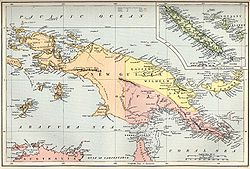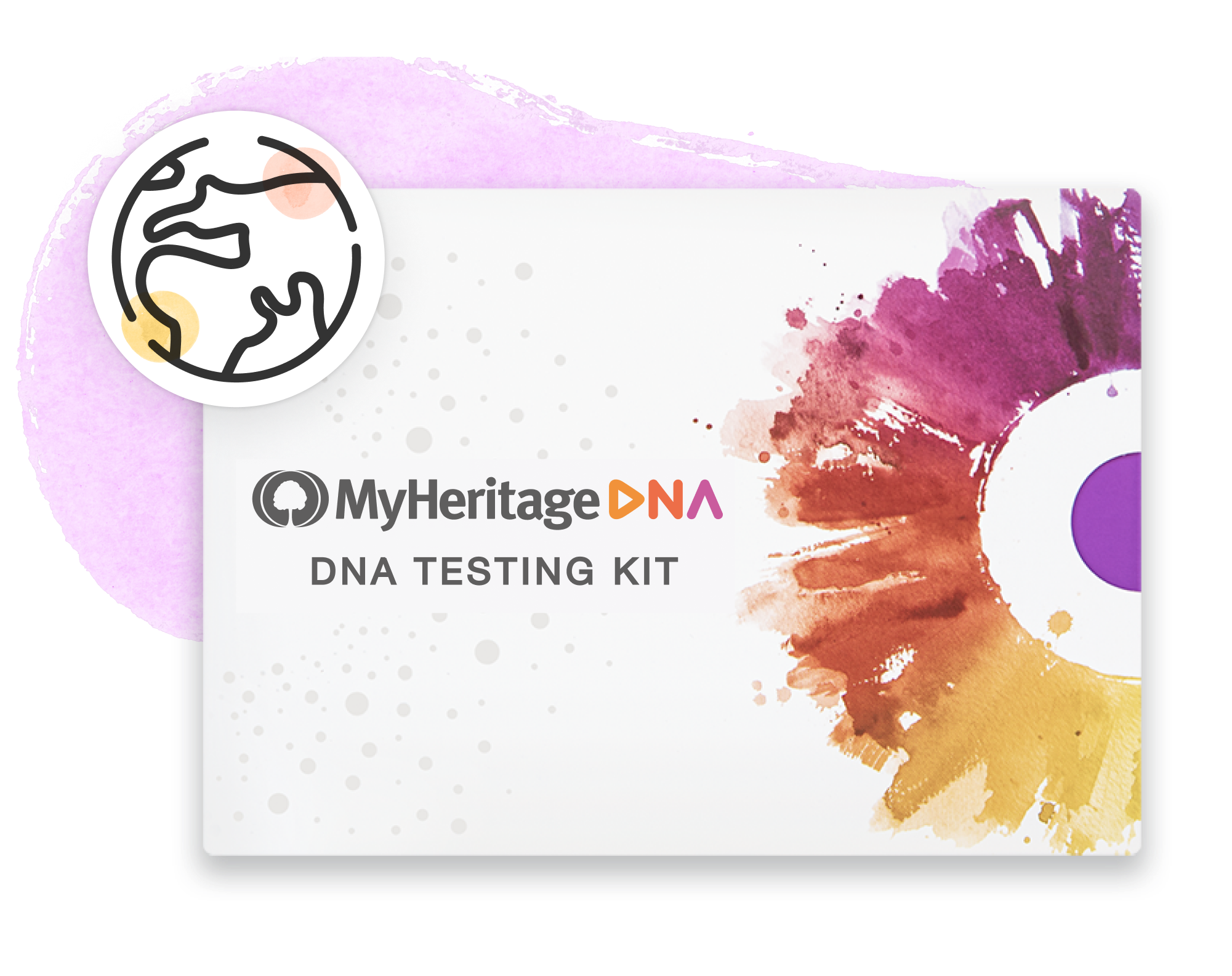
Papuans are the indigenous people of New Guinea, the largest island of Melanesia in the western Pacific Ocean. The island is divided into 2: its western part, aptly named Western New Guinea, is part of Indonesia, while the eastern side of the island and the adjacent Bismarck Archipelago comprise the independent country of Papua New Guinea. New Guinea is home to over 1,000 different tribal groups whose ancestral roots can be traced either to the earliest inhabitants of the island who arrived from the Malay Archipelago some 50,000 years ago or to a much later wave of Austronesian people who left their genetic mark on the island en route to the Polynesian islands. Some Papuan tribes were only first contacted by the outside world as late as the 1970s, while several remain isolated from the wider world even today. Papuan natives and people of Papuan descent can be found across the western Pacific Ocean, including over 40,000 in Australia alone.
Research your ancestors on MyHeritage
Papuan history
Archaeological evidence suggests that humans first reached New Guinea by island-hopping across the Indonesian archipelago from Asia at least 60,000 years ago. Around 9,000 years ago, New Guineans began cultivating local crops, and in doing so, became some of the world’s earliest farmers. While the first European sighting of New Guinea occurred in 1512, it wasn’t until 1526 that Portuguese explorer Jorge de Menezes became the first European to set foot on the main island. He named the islands Ilhas dos Papuas — Papua being a Malay word that means “tightly curled hair”, a characteristic of most of the island’s inhabitants. The name New Guinea was given by Spaniard Yñigo Ortiz de Petez in 1545 because of perceived similarity in appearance between the island’s inhabitants and those of the African Guinea coast.

In the mid-17th century, eager to protect the invaluable spice trade of the East Indies and western Melanesia, the Dutch East Indies Company claimed sovereignty over New Guinea. By the 18th century, British, French, and American explorers and traders came into frequent contact with the island and the surrounding islets. European diseases were devastating for the local population, and the guns the traders had brought with them and introduced to the island resulted in an explosion of native warfare and head-hunting.
The British East India Company explored New Guinea in the late 18th century, and in 1824 came to an agreement with the Netherlands in which the latter would retain the western half of the island (which it did until Western New Guinea became part of the newly-independent Indonesia in 1963). When Germany raised its flag on the north coast of the island, New Guinea was divided into three sections: a Dutch half, a British quarter, and a German quarter. In 1906 British New Guinea became the Territory of Papua, and its administration was taken over by the newly independent Australia. European colonization proved detrimental to the local population: many adult males were whisked away and forced to become indentured workers on plantations in Australia and Fiji due to the practice of “blackbirding.”
When World War I broke out in 1914, Australian troops quickly overran the Germans, and by 1920 German New Guinea was officially handed over to Australia as a United Nations-mandated territory. During World War II, Japan briefly occupied the island, but was successfully fought back by Australian and American forces. Like other Melanesians, most Papuans were initially militarily neutral in the conflict, but many were heavily involved with the Allies forces, operating behind enemy lines as “coast-watchers.” Subsequently, a number of Papuans were awarded decorations for their bravery.
In the decades following the war, a growing discontent with Australian colonialism was stirring among inhabitants of the island, and Australia was urged by the United Nations to prepare the Territory of New Guinea for independence. Australia initiated several educational policies, including increasing literacy among the local population, with the intention of moving towards self-governance on the island. A House of Assembly with 64 members was formed in 1964, internal self-government came into effect in 1973, and full independence for Papua New Guinea was finally granted in 1975.

The greatest threat to the social and political stability of Papua New Guinea since its independence has been the attempted secession of the island of Bougainville: the site of the Panguna copper mine and a central pillar of Papua New Guinea’s economy in the 1980s. In 1990, a group named the Bougainville Revolutionary Army (BRA) spearheaded a movement for the island’s secession from the newly-established country. A period of violent political upheaval centered on the copper mine followed the BRA’s agitation, which then rapidly spread through the island’s society. After nearly a decade of political upheavals on the one hand and overtures towards reconciliation on the other, the Bougainville Peace Agreement finally signed in 2001 provided for the special autonomous status of Bougainville and the promise of a referendum on independence to be held between 2015 and 2020.
Papuan culture
The existence of an estimated 1,000+ different cultural groups on the island of New Guinea makes for a rich and diverse tapestry of cultural traditions. Oral tradition and myth are important to New Guineans: for example, in the Sepik River region, the origin myth of many groups tells of a crocodile who split in 2 — his upper jaw became the heavens and his lower jaw, the earth. Today, most New Guineans identify as Christians, with many combining their Christian faith with aspects of pre-Christian traditional shamanistic practices. Carvings from the Sepik, Gulf, Massim, and Huon Peninsula regions are world-renowned, including intricate masks and crocodile figures bearing religious connotations.

Across Papua New Guinea, wooden hourglass-shaped drums known as kundu accompany song and dance, especially during major national celebrations such as the anniversary of the country’s independence. A distinct element of Papuan culture is the sing-sing festivities, wherein different tribes gather to perform dances and songs in elaborate costumes and body paint, depicting the distinct cultures of each group. The sing-sing has long served as an opportunity for cultural exchange, forging alliances, and resolving disputes between different groups.
New Guineans enjoy a mostly vegetarian diet based on agricultural crops such as sago, rice, taro, and yams, though pork is eaten for special festive occasions. The sago palm is an important staple of New Guinean cuisine: the pith (core tissue) of the palm is processed into a starch that can be made into different dishes. Saksak, an integral part of the local diet, is essentially a dumpling of sago, mashed bananas, and creamed coconut milk. Tourists are dazzled by the vast variety of tropical fruits available on the island, including papayas, pineapples, passionfruit, and, particularly, mangoes.
Papuan languages
Adequately reflecting the island’s ethnic diversity, New Guinea is the most linguistically diverse region in the world. Besides Austronesian languages, New Guinea houses some 800 languages belonging to around 60 language families, alongside many language isolates. The most common among the plethora of languages spoken by Papuans today include Enga (over 230,000 speakers), Western Dani (over 180,000), Huli (over 150,000), and Melpa (over 13,000) — all invariably endemic to the New Guinea highlands. Creole languages are commonly spoken and allow Papuans from different tribes and societies to communicate, including Tok Pisin (New Guinea Pidgin) and Hiri Muto — both national languages of Papua New Guinea.
Explore more about ethnicity estimates
- MyHeritage DNA at MyHeritage
- Ethnicities around the world at MyHeritage
- What Is My Ethnicity? How MyHeritage Estimates Ethnicities at MyHeritage Knowledge Base
- Where's My Ethnicity?!: Why An Ethnicity Might Not Show Up In Your DNA (and How To Find Evidence Of It Anyway) at MyHeritage Knowledge Base


